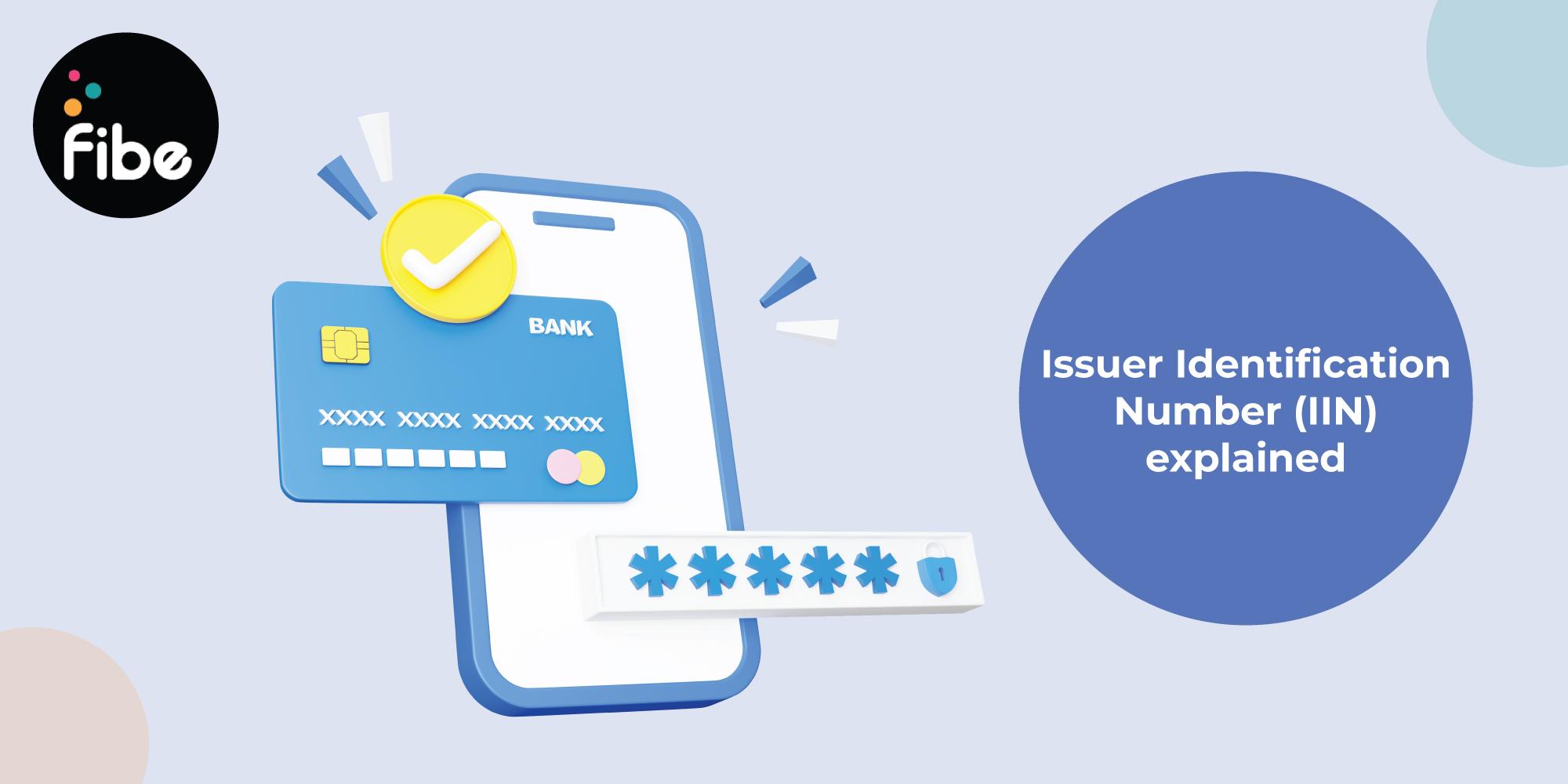Issuer Identification Number: All You Need To Know
Reviewed by: Fibe Research Team
- Updated on: 28 Dec 2023
Reviewed by: Fibe Research Team

Wondering what an Issuer Identification Number or IIN is? Well, it’s an important component of payment cards, like credit and debit cards. The number helps identify the card issuer and your card’s processing network. Apart from this, you get to enjoy several other benefits, making this an important part of your payment card.
Here’s a brief snapshot of IIN, its importance and how it works.
An Issuer Identification Number is the first 6 to 8 digits you can find in a payment card. It is generally placed before your Primary Account Number (PAN) on the card. The IIN indicates the card network and the industry it’s associated with.
With the help of this number, merchant banks manage transactions effectively. It also helps reduce the chances of error and financial fraud. The alternate name of IIN is Bank Identification Number or BIN.
Here is an example for better clarity regarding the IIN. Suppose your credit card number is 5526 7184 3412 3720. If the credit card issuer uses a 6-digit IIN, then the IIN for your card will be 552 671. If your credit card issuer uses an 8-digit IIN, then the IIN for your card will be 5526 7184.
To understand how an IIN works, you need to break it into two parts:
The first digit of the IIN is the MII, which indicates the network with which the card is associated. Other digits make up the BIN, which helps identify the credit card issuer.
Here is a table of MII that you can use to understand which network your card is a part of:
| First Digit of IIN | Associated Industry/Credit Card Company |
|---|---|
| 1 | Airlines |
| 2 | Mastercard |
| 3 | Entertainment and travel |
| 4 | Visa |
| 5 | Mastercard |
| 6 | Discover |
| 7 to 9 | Healthcare, petroleum and other such industries |
The IIN number of a payment card holds high significance because of several reasons, some of these include:
The IIN allows the identification of the processing network used for a transaction made by a card. This, in turn, ensures that your payments are processed efficiently and smoothly.
The number helps make your transactions more secure as it helps verify and authenticate the payment card’s status. This layer of security also helps prevent unauthorised transactions and other fraud.
The IIN number has also improved the management of payment cards and the transactions executed using these cards. It aids in quicker identification of the card issuer, allowing reduced errors and processing time for transactions.
The verification and authentication that IIN helps ensure that only authorised cardholders who have adequate funds can carry out transactions. With this optimum verification, merchants and customers consider these transactions reliable and secure. Thus, it helps boost the confidence of all the parties associated with the transactions.
Now that you know the IIN full form and what is an IIN number in a bank or otherwise issued card, you have a clearer understanding of how payment cards work. However, despite the security that these features add, the numbers on your credit card still make it vulnerable to fraud. Thankfully, you can now get a numberless card and ensure that your finances are secure.
The Fibe Axis Bank Credit Card is India’s first numberless credit card, enabling you to make secure transactions easily. That’s not all. With this credit card, you can get discounts of up to 3% on every transaction, 15% on dining with partner restaurants and much more! You can also link with UPI apps to make seamless payments. Download the Fibe App or log in to our website to apply.
The IIN number helps know the card company and the industry a payment card is associated with. The number also helps streamline payments, prevent fraud, support identification and more.
There is no difference between the Issuer Identification Number (IIN) and the Bank Identification Number (BIN).
A Bank Identification Number, or BIN, is the initial digits on a credit card or any other payment card that helps identify the issuing institution and industry.